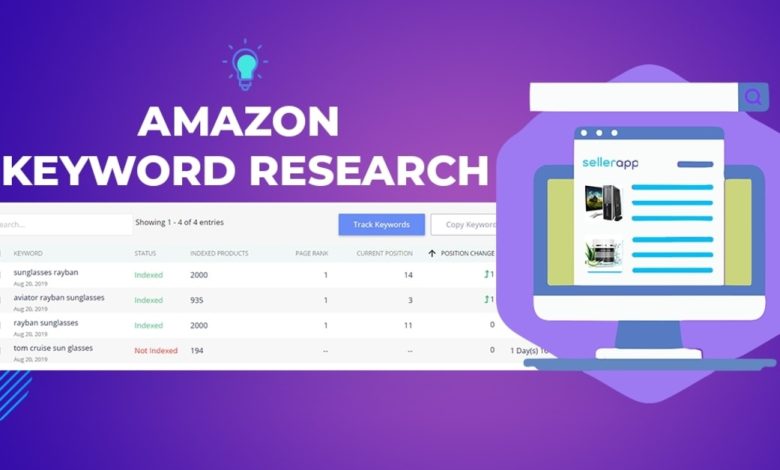How to Perform Effective Keyword Research on Amazon

Keyword research in an online marketplace like Amazon is determining the most appropriate words and phrases to describe your goods. Knowing and carefully applying those keywords allows shoppers to find your product listings, so being thorough is crucial.
Long-tail keywords are critical since the marketplace’s search algorithm attempts to identify the most relevant goods to the terms searched.
Long-tail keywords (keywords with at least three words that are more unique to a target market than general search terms) can boost your conversion rate by 2.5 times.
To give the best customer experience, Amazon’s search algorithm blends keyword relevancy, quality sellers, and quality items.
The Basics of Finding Initial Keyword Ideas on Amazon
Discovering the relevant phrases, categories, and trends connected to your product is the first step in finding the right keywords. Here are three stages to help you focus on those categories:
1. Browse Niches You’re Interested In
If you’re new to Amazon selling or considering extending your product line, your first step should be to research those topics.
You can develop a short keyword list by starting in niches about which you already have some information.
You can start by typing a seed keyword (a beginning point keyword) into the Amazon search bar and jotting down all expanded alternatives that appear. This will give you a decent sense of the terms that people use to find your goods. If you’re still in the product-finding process, keeping an open mind and looking for underserved areas is critical.
2. Seek High-Volume Keywords
For any of our target niches, the end goal is to rank for high-volume keywords. Targeting less competitive long-tail keywords (such as “black wheeled snow pusher” rather than “snow pusher”) is the first step.
However, you should also aim for high-volume phrases, which are more comprehensive and shorter in length (“snow shovel”).
High-volume keywords allow you to reach a larger audience of Amazon shoppers, but they’re also quite competitive, as many other sellers will be using the same keywords in their listings.
As your brand grows in popularity and your Amazon SEO services expand, you’ll automatically rank higher for those keywords.
Performing Additional Keyword Research and Analysis
You must expand and offer detail to your listings once you have a decent understanding of broad keyword goals. Additional keyword research and analysis are required:
Use Amazon’s Keyword Suggestions From Seller Central
PPC tools are available on all online marketplaces. Those PPC targets are usually based on what buyers look for, which means you have a decent chance of optimizing your product listings.
You can construct search-optimized product descriptions using your seed keywords. Use the Amazon Advertising Console to find keyword suggestions based on search volume, competitiveness, and other factors.
You can receive more potential exposure in search results pages if you target secondary and backside keywords.
Look at Competitor’s Products
Competition should be one of the most important components of your research as a seller.
A competition study can help you figure out what customers want and how other firms are selling those items on the market. It also allows you to target underrepresented niche niches.
Competitor items are also chock-full of keywords you may not have considered. It’s critical to maintain competitive keyword targeting while creating unique and compelling content.
Amazon Competitive analysis tool can show you how your listing compares to others. You may ensure that you have all of the required, standard elements for a listing in your category while also looking for methods to differentiate yourself and your business.
Use Keyword Tools
Amazon is one of the most established marketplaces in the world, allowing many third-party developers to construct keyword research solutions. Familiarize yourself with the third-party tools offered by your chosen online marketplace.
The Amazon Keyword Tool, for example, allows customers to see revenue possibilities. Competitive information, other items that rank for the keyword, and adjacent objectives should all be included in your tool. Although Amazon’s Seller Central includes tools, having an outside opinion can be beneficial.
Conclusion
It’s critical to stay competitive and target the proper keywords if you want your Amazon brand to develop. Because relevance is so vital to Amazon’s search algorithm, make sure you conduct regular keyword research and optimize your listings on a regular basis.





